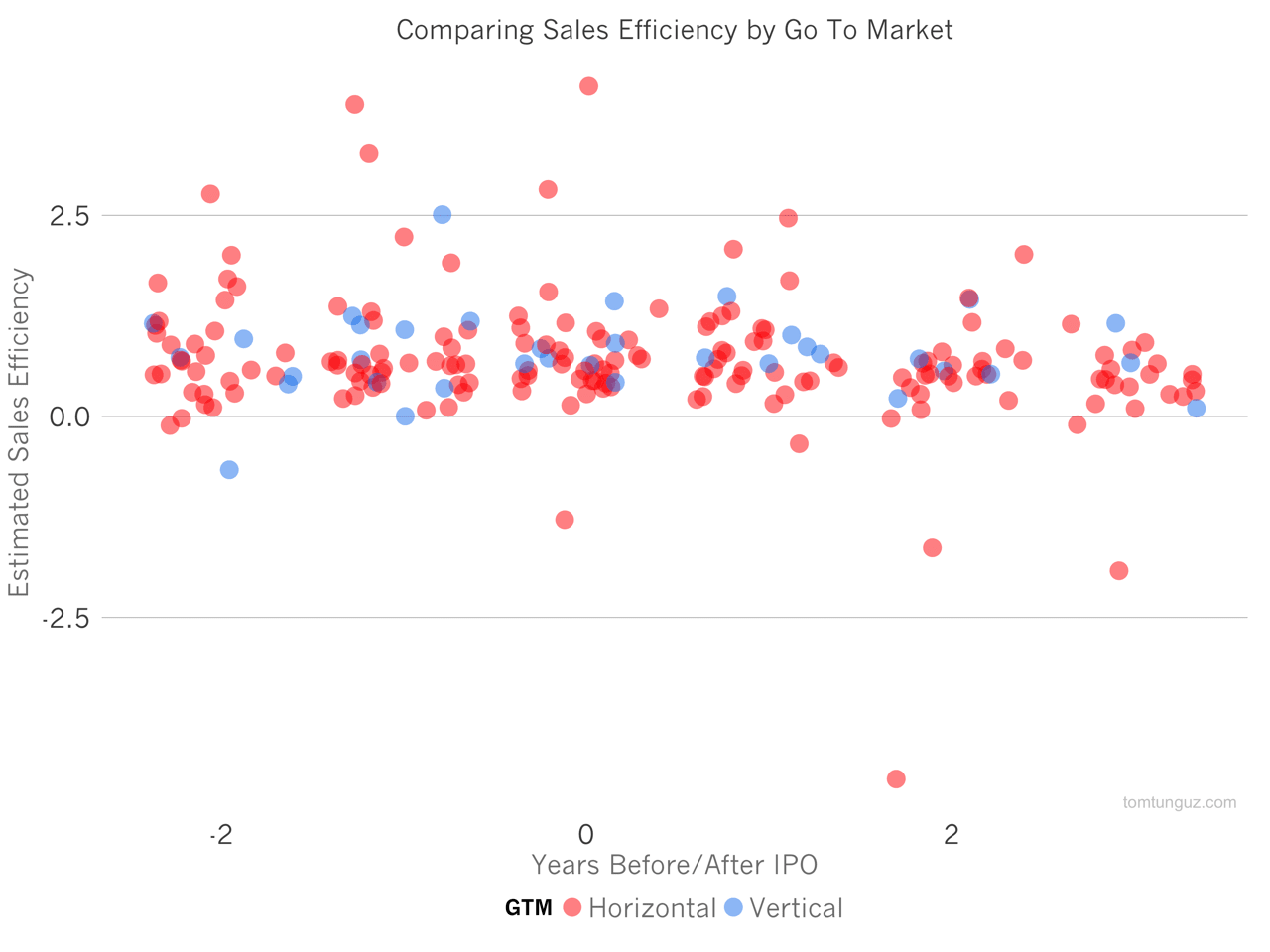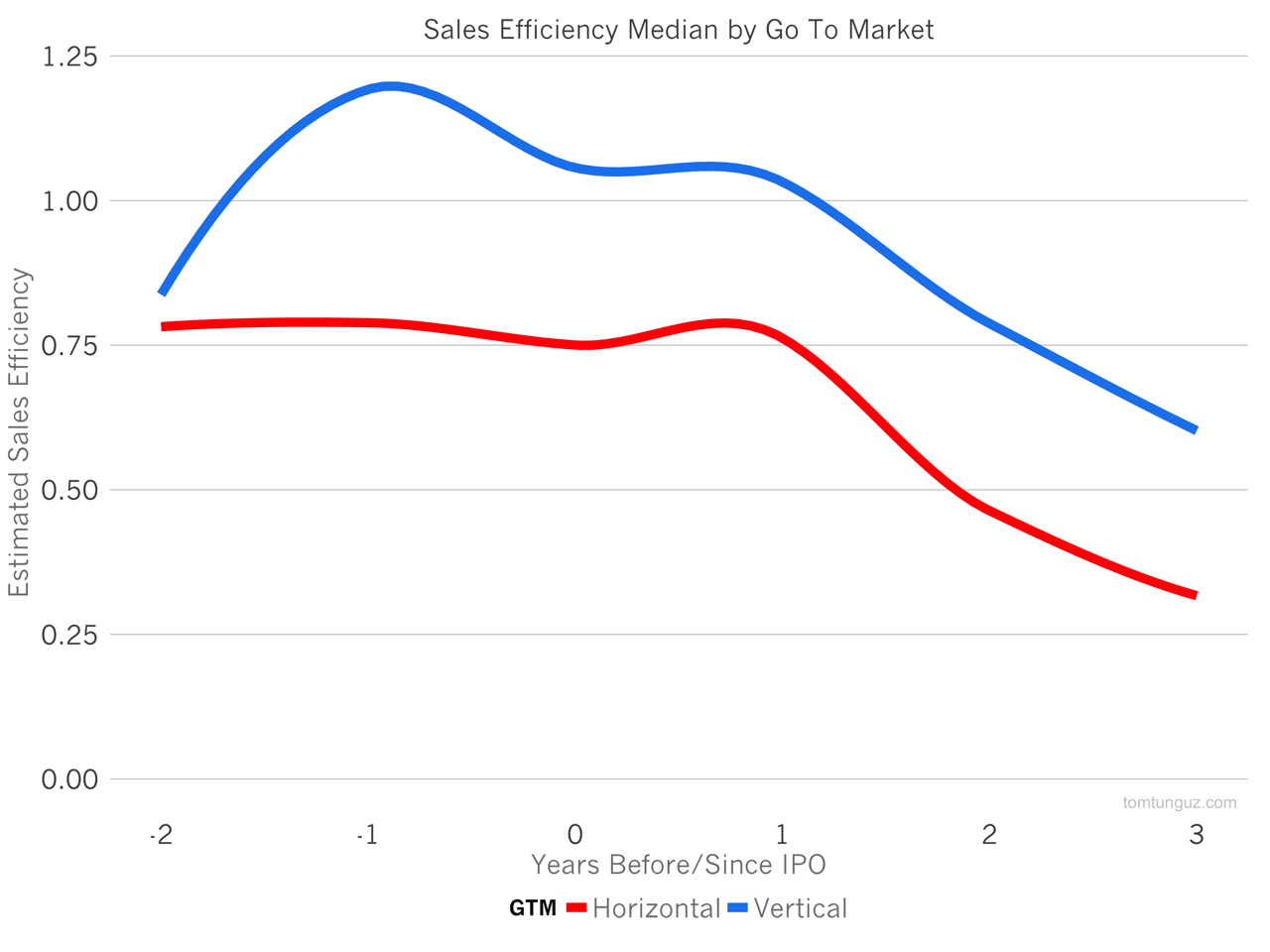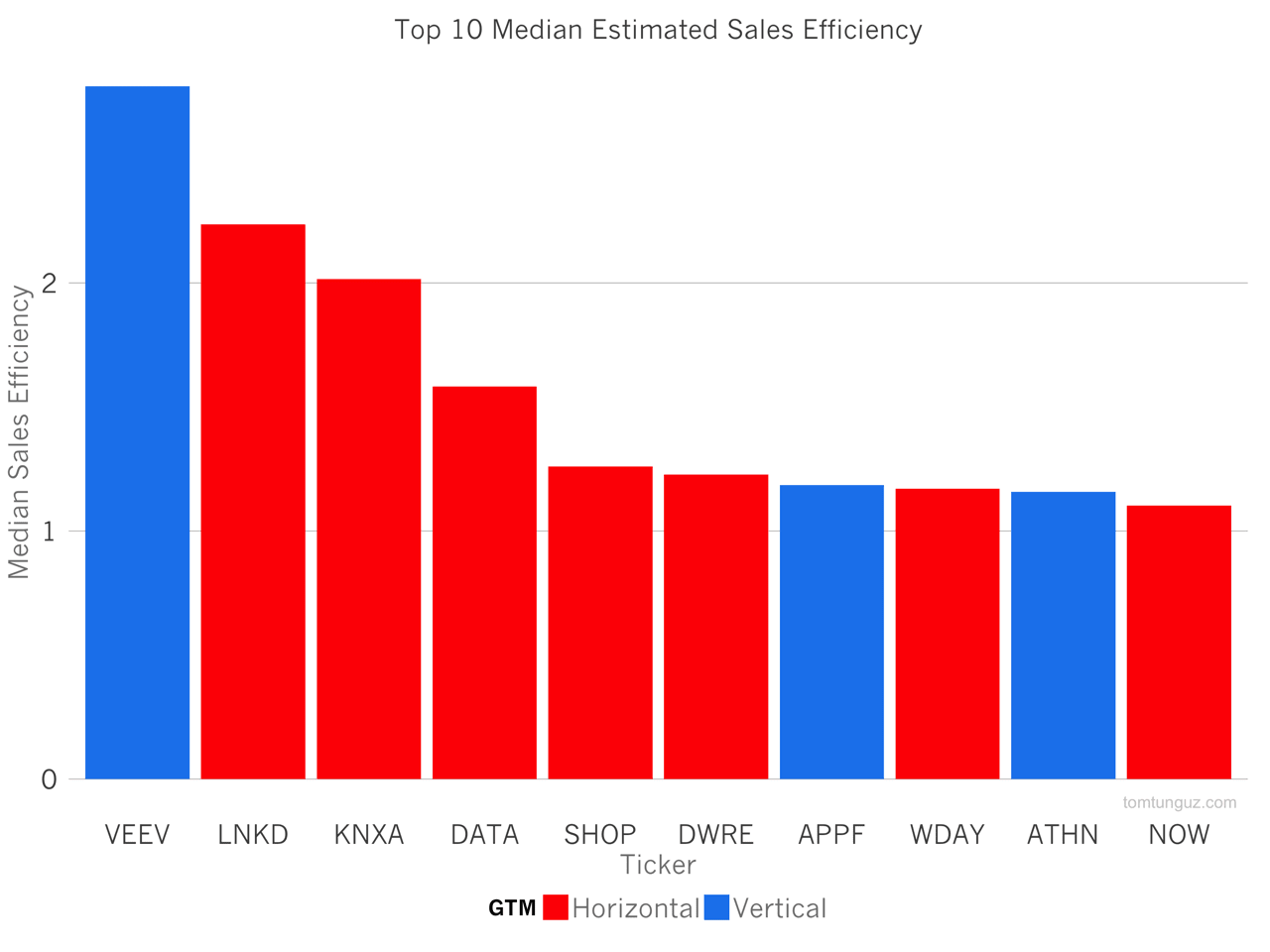2 minute read / Sep 17, 2015 /
Do Vertical SaaS Companies Benefit from Higher Sales Efficiency?
When writing the post Vertical SaaS Startups Require Different Go To Market Than Horizontal SaaS Companies, I realized that there is a perception on my part and perhaps more broadly that vertical SaaS companies enjoy greater sales efficiencies than horizontal SaaS companies.
After all, vertical SaaS companies target a smaller number of potential buyers. The marketing team concentrates their media buys to target this audience, the sales team focuses on a smaller lead list.
Does the data support this notion? The point chart above compares the estimated sales efficiency of 54 publicly traded SaaS companies - 10 vertical in blue and 44 horizontal in red - for two years before IPO and three years after. It’s hard to discern a difference between the two.
But, if we chart the median by year, we see that the vertical SaaS companies do exhibit a higher median for each of the years. Over this time period, horizontal companies record a mean of 0.66 compared to 0.97 for vertical companies. And this difference is statistically significant (p value = 0.026)
The chart of top 10 software companies by median sales efficiency shows that there is a healthy mix of both horizontal and vertical companies. Horizontal companies can also achieve terrific sales efficiencies. But the median horizontal company is less efficient.
This may be because of a greater competitive pressure within the horizontal markets. Increased competition in a market segment drives up marketing costs, reduces sales win percentage and decreases sales efficiency.
After this analysis, I compared a few other key metrics including revenue, revenue growth, net income, sales & marketing spend as a percentage of revenue.
| Metric | P Value |
|---|---|
| Revenue | 0.28 |
| Revenue Growth | 0.20 |
| Net Income | 0.26 |
| Sales & Marketing/Revenue | 0.54 |
| Cash from Operations | 0.59 |
Unlike sales efficiency, none of these health metrics differ materially from vertical to horizontal SaaS companies. This may be because the number of vertical SaaS companies is relatively small still. Or, more likely, exceptionally efficient businesses can be built both with a horizontal and a vertical go-to-market strategy. For every Veeva, there is also a Kenexa.
Vertical software companies do benefit from a better sales efficiency. But it’s unclear what that efficiency translates into, aside from lower sales and marketing costs. I would have suspected this efficiency would translate into better Cash from Operations, implying vertical software companies require less capital to achieve the same revenue and growth, but the data doesn’t yet support that thesis.
I’m hopeful that with more vertical SaaS startups succeeding and growing quickly, we will know more with time.


